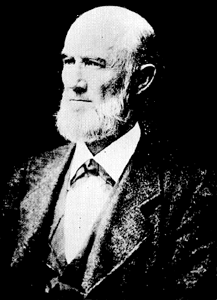 Bridging the Mississippi
Bridging the Mississippi
Although engineers claimed a bridge joining East St. Louis and St. Louis
was possible in the 1830s, no one launched a serious effort until after
the Civil War. A skeptical public and an economy weakened by war
contributed to reluctance to invest in such an expensive venture.
However, in 1865 an Illinois company was formed to raise the capital for
a bridge but was blocked by the powerful Wiggin's
Ferry Company. Wiggin's Ferry owned most of the East St. Louis
waterfront on Bloody Island, the former
sand bar that became the waterfront when the canal
 |
| Inventor, engineer, James B. Eads (1820-1887) |
between it and East St. Louis was filled. Along this property the
ferry company launched numerous daily trips across the river in large steam
powered ferry-boats. The proposed bridge would be direct competition
to the ferry service and the Wiggin's Ferry Company would try for years
to block any such effort.
Successful in the effort to stop bridge development in East St. Louis,
the Wiggin's Ferry Company could not stop the formation of the St. Louis
and Illinois Bridge Company on the Missouri side in 1867. The company
hired James B. Eads, a former Union Navy officer and builder of iron-clad
gunboats. Eads was a skilled engineer and capable of designing and
overseeing the construction of the formidable project. Soon after
the St. Louis and Illinois Bridge Company formed, an Illinois company formed
and retained Chicago bridge contractor L.B. Boomer. The Illinois
company proposed a different design than the arch design James Eads planned.
Thus, a competition arose among the business elite of the region to gain
the federal government's approval for constructing particular designs.
 Bridging the Mississippi
Bridging the Mississippi Bridging the Mississippi
Bridging the Mississippi